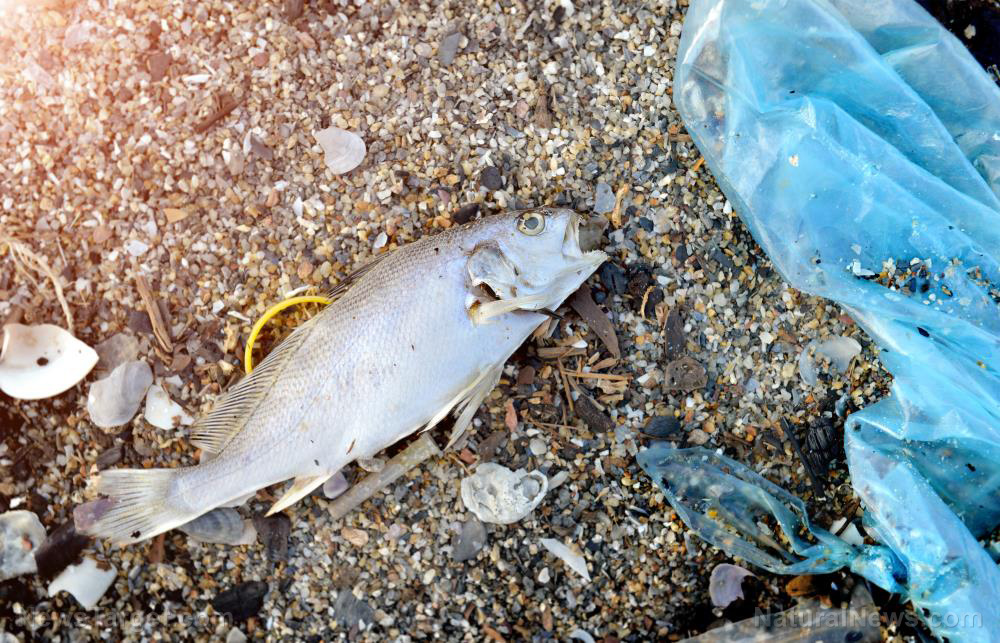
According to the research team, a paper-based sensor they developed can tell you when food has gone bad. The sensor is cost-effective, and you can easily access it using a smartphone app.
Affordable and eco-friendly freshness sensors
The food sensor only costs a few cents to produce and it can be linked to devices also developed by the researchers that can detect gasses from spoiled meat and fish.
The green gadgets will help minimize food waste and plastic pollution. The researchers also believe that their invention can help shoppers save a bit of money.
The freshness sensors are embedded in packaging and within three years they could replace "best before dates" in meat and fish products. The sensors can also be used on dairy goods and some produce.
Dr. Firat Guder, the lead author of the study from the department of bioengineering at Imperial College London, explained that while use-by dates promote food safety, they also sometimes result in food waste.
Guder added that use-by dates aren't always reliable when ensuring food safety. For example, you can get sick from food-borne diseases due to poor storage, even if the product was within its use-by date.
In the U.K., one in three consumers throws away food after it reaches the use-by date. However, 60 percent (a whopping 4.63 million tons) of the $15.9 billion of produce thrown away yearly is still safe for consumption.
The prototype food sensors cost less than two cents each to make. Also called paper-based electrical gas sensors (PEGS), the sensors detect certain gases such as ammonia and trimethylamine, a colorless gas with a fishy odor at low concentrations. These gases indicate when meat and fish are no longer safe for human consumption.
Users can then read the data by holding their smartphone up to the packaging.
The sensors are made by printing carbon electrodes onto cellulose paper, a readily available material. The biodegradable materials used for the freshness sensors are non-toxic so they're safe for the environment and for food packaging.
The freshness sensors can be fitted with "near field communication" (NFC) tags, which are a series of microchips that can be picked up by nearby smartphones.
During laboratory testing on packaged fish and chicken, PEGS picked up trace amounts of spoilage gases quickly and more accurately than existing alternatives. All for only two cents per sensor. (Related: Food waste is costing us all: The environmental and financial cost of spoiled food.)
Guder commented that the PEGS are the first "commercially-viable food freshness sensors." The researchers hope that freshness sensors can be used to reduce both food waste and plastic pollution.
The PEGS can minimize waste and allow shops to use targeted price reductions for certain items based on PEGS instead of their use-by dates.
The problem with existing food spoilage sensors
Current food spoilage sensors aren't used often because of three reasons:
- They're too expensive.
- They comprise a quarter of overall packaging costs.
- Consumers find them too difficult to understand.
Meanwhile, color-changing sensors could also increase food waste because consumers might think the slightest color change indicates "bad food" that should be thrown away.
The PEGS can address both issues since they're cost-effective and user-friendly. The freshness sensors can also resolve the disadvantages of current gas sensors since they're just as effective at almost 100 percent humidity.
Gas sensors aren't as effective when humidity is above 90 percent.
The PEGS also offer these advantages:
- They work at room temperature.
- They don't need to be heated, meaning they consume very low amounts of energy.
- They're only sensitive to the gases involved in food spoilage, unlike other sensors that can be triggered by harmless chemicals.
Finally, the scientists only required ballpoint pens and robotic cutters to create the PEGS.
The research team is hopeful that the PEGS may have applications beyond food processing, such as sensing chemicals in agriculture and air quality. Further study will hopefully produce PEGS that detect disease markers in the breath, such as those involved in kidney disease.
The scientists are currently working to address how sensitive PEGS are to lower humidity. Testing is ongoing in other industries that are developing different PEGS to detect different chemicals to ensure that the technology can be applied to a wider variety of food types and applications.
Sources include:
Please contact us for more information.























